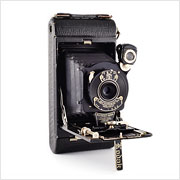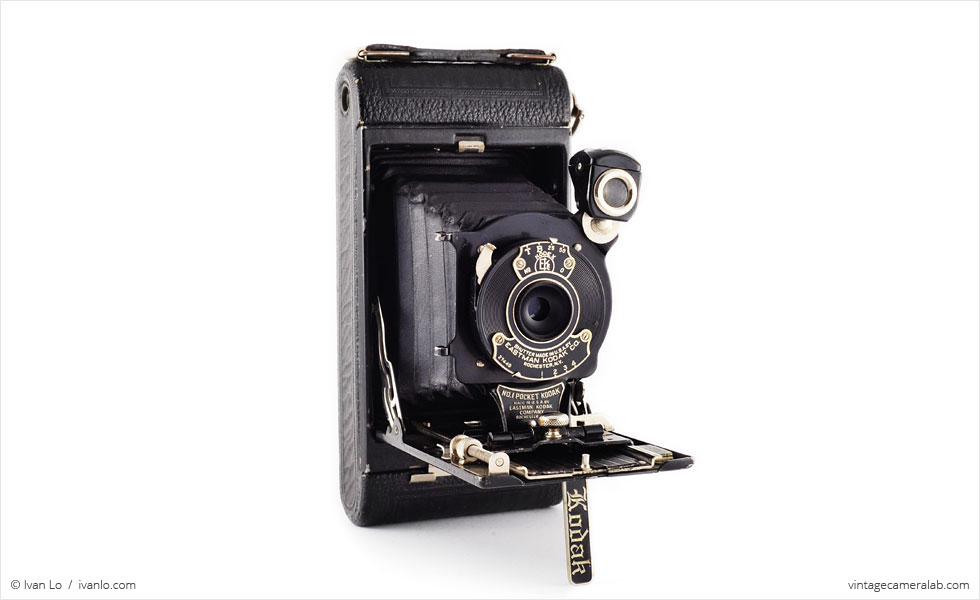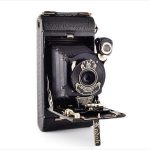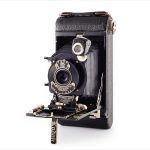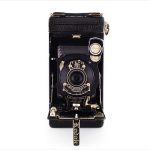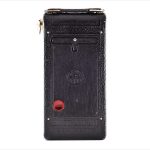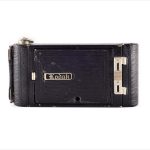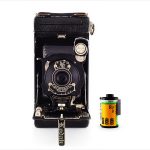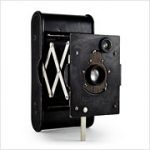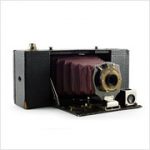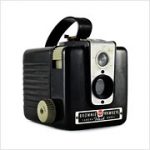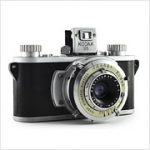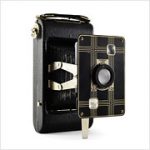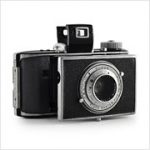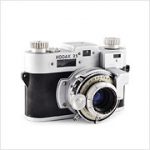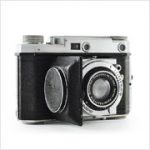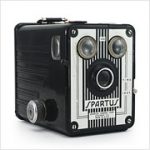No.1 Pocket Kodak Specifications
| Manufacturer: | Eastman Kodak Company |
| Origin: | USA |
| Made in: | Rochester, NY, USA |
| Introduced: | 1926 |
| Type: | Folding, Viewfinder |
| Format: | 120 Film (autographic) |
| Dimensions: | 8 x 17 x 4.2 cm (closed) |
| 8 x 17 x 13 cm (open) |
No.1 Pocket Kodak Overview
The No.1 Pocket Kodak is designed to take Kodak’s then-popular but ultimately short-lived autographic film which allows you to use the camera’s metal stylus (which is usually found attached to the brackets just next to the shutter lever but is missing from mine) to record information about the photograph you just took by opening the squat T-shaped window on the rear panel of the camera and writing directly onto the margin of the negative via carbon transfer paper. Regular 120 film also works, of course.
The camera uses a achromatic meniscus lens with a maximum aperture of f/6.3 and a Kodex shutter with four speeds: time, bulb, 1/25, and 1/50. A rotating waist-level viewfinder can be found diagonal from the lens and focusing is achieved via worm screw on the user’s right side of the front panel with a focus distance scale on the left. The Pocket Kodak also features two tripod sockets: one just behind the worm screw for portraits and one on other side of the winding key for landscapes.
I found this folding camera in the display case at a thrift store and got it for $20. The aforementioned stylus is missing (a common problem with these cameras) and the winding key is slightly deformed but the camera is in pretty good shape overall with minimal scuffs and nicks. Enjoyable details on this camera include the elegant Art Deco folding struts, the EKC logo near the shutter speed selector and the calligraphy style typeface used on the “kick stand” (the back of which also bears the serial number).
Find your very own No.1 Pocket Kodak on eBay.
McKeown, James M. and Joan C. McKeown’s Price Guide to Antique and Classic Cameras, 2001-2002. (Grantsburg, WI, USA: Centennial Photo Service, 2001), p 358.
